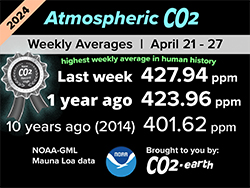The poorly made Faroe Islands NFT stamps
The poorly made Faroe Islands NFT stamps
Welcome to Hoken Tech
With the advent of blockchain technology and the explosion of the NFT sector, the opportunities to create new things and experiences have really multiplied in recent years, with ever different and not always successful experiments.
The NFT stamps
Among some experiments that have been made over time, one has found widespread application both in terms of the number of NFTs created and official and important bodies that have adopted them, such as Switzerland, Austria, the Faroe Islands and others.
As the name itself recalls, these are traditional stamps, usually with particular graphics created for the event, to which another part is attached which is that of the NFT, where the actual NFT of that particular stamp is found.
How NFT stamps work
As said, these stamps are divided into 2, a physical part which is the traditional style stamp itself, and an NFT part where it is found on a blockchain that was used for its creation.

Furthermore, behind the stamp, there is a covered section containing a QR code and the seed of the related blockchain address on which the respective NFT is found.

The problems of the Faroe Islands NFT stamps
What has been seen so far is one of the solutions that has also been adopted by other projects and which could therefore be valid, but which as we will see, we must understand the content and how the entire project was created.
In fact, a problem that only those in the industry can understand and verify is the type of storage used to save the images of the NFTs, where the most important projects use decentralized storage precisely to avoid relying on third parties and therefore lose the relative image, in fact over time this solution is the best, and even centralized solutions are branded as scam projects because it is possible to delete or modify the relative image linked to that NFT.
Unfortunately this project uses a centralized server system, in detail based on Amazon AWS, so this means that if that service or if the team that manages the credentials of that system fail, then the image of that file and all information will be lost.

Another problem that according to us is very serious concerns the system implemented for the authenticity of these NFTs, in fact each NFT stamp contains within itself an NFC tag that contains the information of the respective NFT, since this NFC system has not been protected in any way, allowing not only anyone to delete the information contained, but also to overwrite it with other false data.

What can we say, we were astonished by this discovery, and moreover we are talking about a product that in the end costs about €20, but that practically and technically disappoints a lot and is not even safe as it should be.
The future of NFT stamps
One might wonder if these NFT stamps make sense or not, and here we find conflicting answers if we look only at the sphere of collecting, then for that market niche it makes sense, in this case we imagine a section "Badly made NFT stamps".
If instead we look at it from a functional point of view, then we ask you "would you buy a €20 stamp that you would not use? "
Certainly as a solution it is valid, but implemented badly and with relevant technical shortcomings, and it is here that relying on companies in the sector and especially competent ones allows to create interesting projects that are also safe from every point of view, like those created by Hoken Tech, as this type of solutions are part of the team's roadmap with some already working and better prototypes of this.
nft, hoken tech, blockchain, cryptoart, eos, nft art, artificial intelligence, ai, watch authentication, crypto artist, nfts, web3, nft game, web3 game, videogame, nft distributor, videogame blockchain







